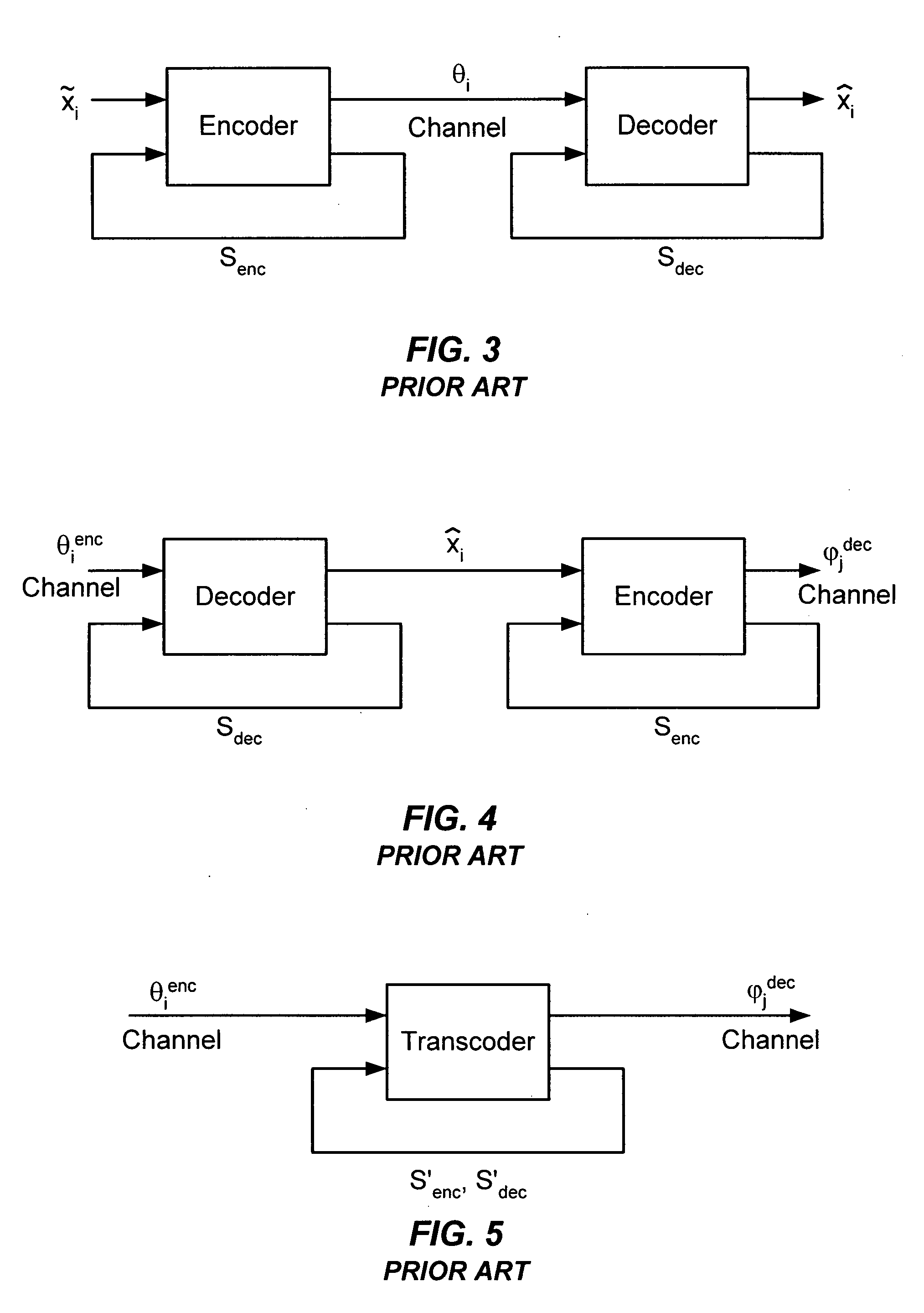Transcoding method and system between CELP-based speech codes with externally provided status
a technology of external status and transcoding method, applied in the field of processing information, can solve the problems of large amount of compression, significant signal processing, and information loss, and achieve the effect of reducing the outbound bandwidth
- Summary
- Abstract
- Description
- Claims
- Application Information
AI Technical Summary
Benefits of technology
Problems solved by technology
Method used
Image
Examples
first embodiment
GSM-AMR to 6.723.1
[0129]FIG. 17 is a block diagram illustrating a transcoder from GSM-AMR to G.723.1 according to a first embodiment of the present invention. The GSM-AMR bitstream consists of 20 ms frames of length from 244 bits (31 bytes) for the highest rate mode 12.2 kbps, to 95 bits (12 bytes) for the lowest rate mode 4.75 kbps codec. There are eight modes in total. Each of the eight GSM-AMR operating modes produces different bitstreams. Since a G.723.1 frame, being 30 ms in duration, consists of one and a half GSM-AMR frames, two GSM-AMR frames are needed to produce a single G.723.1 frame. The next G.723.1 frame can then be produced on arrival of a third GSM-AMR frame. Thus two G.723.1 frames are produced for every three GSM-AMR frames processed.
[0130] The 10 LSP parameters used by the short-term filter in the GSM-AMR speech production model, are encoded using the same techniques, but in different bitstream formats for the different operating modes. The algorithm for reconst...
second embodiment
6.723.1 to GSM-AMR
[0137]FIG. 18 is a block diagram illustrating a transcoder of G.723.1 to GSM-AMR according to a second embodiment of the present invention. The G.723.1 bitstream consists of frames of length 192 bits (24 bytes) for the high rate (6.3 kbps) codec, or 160 bits (20 bytes) for the low rate (5.3 kbps) codec. The frames have a very similar structure and differ only in the fixed codebook parameter representation.
[0138] The 10 LSP parameters used for modeling the short-term vocal tract filter, are encoded in the same way for both high and low rates and can be extracted from bits 2 to 25 of the G.723.1 frame. Only the LSPs of the fourth subframe are encoded and interpolation between frames used to regenerate the LSPs for the other three subframes. The encoding uses three lookup tables and the LSP vector reconstructed by joining the three sub-vectors derived from these tables. Each table has 256 vector entries; the first two tables have 3-element sub-vectors, and last tabl...
PUM
 Login to View More
Login to View More Abstract
Description
Claims
Application Information
 Login to View More
Login to View More - R&D
- Intellectual Property
- Life Sciences
- Materials
- Tech Scout
- Unparalleled Data Quality
- Higher Quality Content
- 60% Fewer Hallucinations
Browse by: Latest US Patents, China's latest patents, Technical Efficacy Thesaurus, Application Domain, Technology Topic, Popular Technical Reports.
© 2025 PatSnap. All rights reserved.Legal|Privacy policy|Modern Slavery Act Transparency Statement|Sitemap|About US| Contact US: help@patsnap.com



